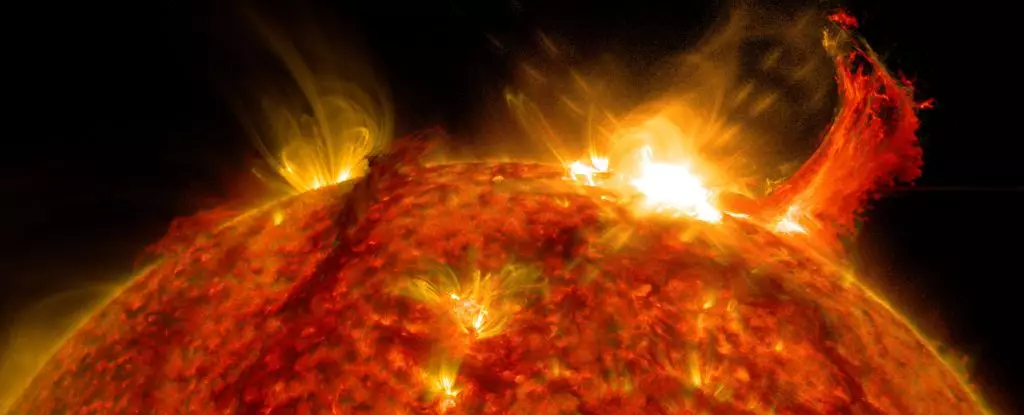Approximately 14,300 years ago, our planet was struck by an unprecedented cosmic phenomenon that would go on to leave an indelible imprint on Earth’s geological formations and ecosystems. Evidence suggests that around 12350 BCE, a colossal solar event unleashed an extraordinary torrent of charged particles, making it one of the most significant geomagnetic disturbances on record. The fine details of this past cataclysm were recently substantiated by pioneering research conducted by a team led by space physicist Kseniia Golubenko from the University of Oulu, Finland, harnessing a specially designed climate-chemistry model known as SOCOL:14C-Ex. This cosmic drama not only transformed the atmospheric landscape of the time but raised critical questions about our understanding of solar activity and its impacts on our planet.
The Mechanics of a Cosmic Storm
At its core, a geomagnetic storm is often ignited by a coronal mass ejection (CME), which involves a massive expulsion of plasma infused with magnetic fields from the Sun’s surface. When these particles collide with Earth’s magnetic field, they can generate profound disruptions in both natural and man-made systems. The aftermath can range from stunning auroras illuminating the skies to catastrophic breakdowns of modern infrastructure, as evidenced by historical events such as the Carrington Event in 1859 and the 1989 solar storm, which wreaked havoc on power grids in Quebec. What sets the 12350 BCE event apart from its modern counterparts is not just its magnitude but its timing, occurring during a period characterized by glacial climates, a stark contrast to the warmer Holocene epoch when most other known geomagnetic storms occurred.
Seeking Evidence in Nature
The key to uncovering the details of this ancient solar catastrophe lies within the enigmatic carbon-14 isotope. Carbon-14 is formed when cosmic rays interact with particles in Earth’s upper atmosphere, and its incorporation into organic matter allows researchers to date historical events with surprising precision. By examining tree rings and ice cores, scientists have been able to trace spikes of carbon-14, which are indicative of past geomagnetic storms. For the monumental solar event of 12350 BCE, researchers meticulously adapted a radiocarbon dating model to account for the climatic conditions of the period, effectively bypassing limitations of previous methodologies that were constrained to the more stable, warmer climate of the Holocene epoch.
The Significance of Discovering Ancient Events
The implications of confirming a geomagnetic storm of this magnitude 14,000 years ago are both enlightening and alarming. Not only does it highlight the Sun’s capability to produce catastrophic events much larger than those experienced in the modern era, but it also serves as a stark reminder of our vulnerability. As Golubenko eloquently states, this ancient storm establishes a “new worst-case scenario” for solar activity, igniting discussions regarding preparedness for future solar phenomena that could have dire consequences for our technology-dependent civilization.
This discovery underscores the necessity of understanding our solar system’s behavior. The research into past geomagnetic storms provides a temporal framework that equips scientists with the data to forecast potential future events. As we rely more heavily on technology that is susceptible to solar disturbances, proactive measures—be it developing robust infrastructure or better predictive models—become imperative.
Future of Solar Research
As advances in technology enhance our ability to study and interpret ancient data, the potential for unraveling mysteries surrounding solar activity becomes more pronounced. Investigating historical events like the 12350 BCE geomagnetic storm not only enriches our understanding of solar dynamics but also paves the way for innovative strategies to mitigate risks from future solar activity. In a world ever reliant on technology, fostering collaboration within the scientific community holds the key to safeguarding our civilization from the whims of our nearest star. The impending questions remain; how will we adapt? What lessons can we glean from geological history to fortify our present and future? As we gaze into the cosmos, these truths await our exploration.

